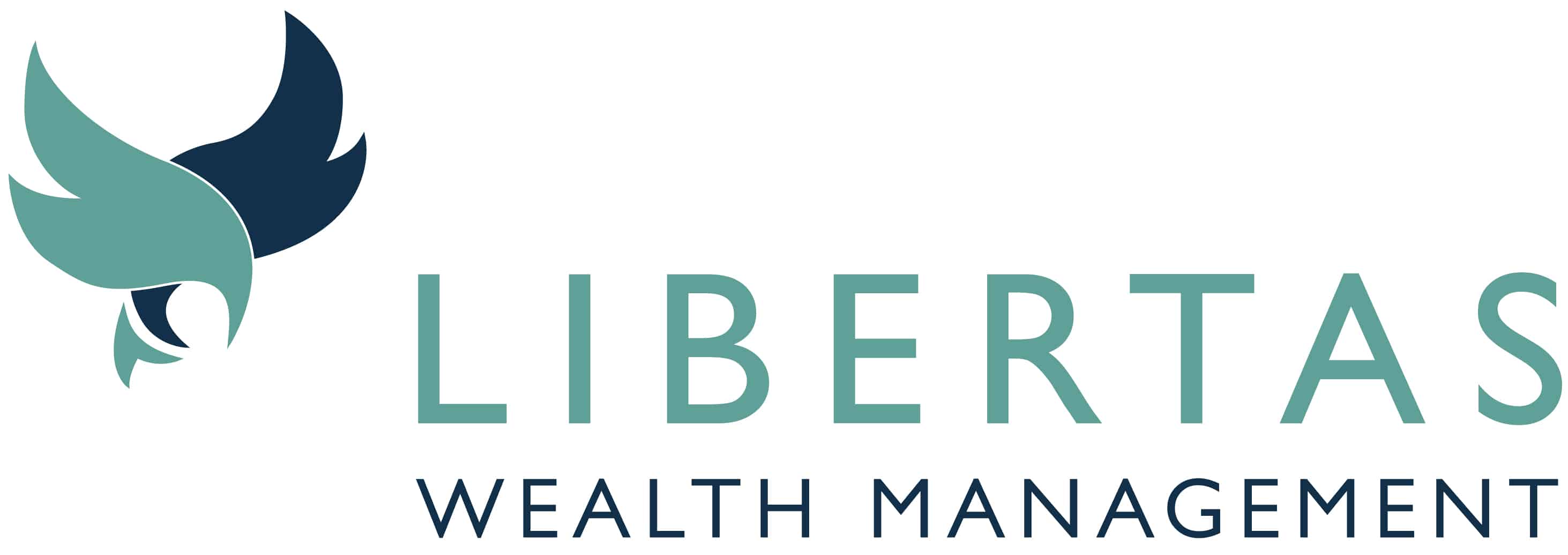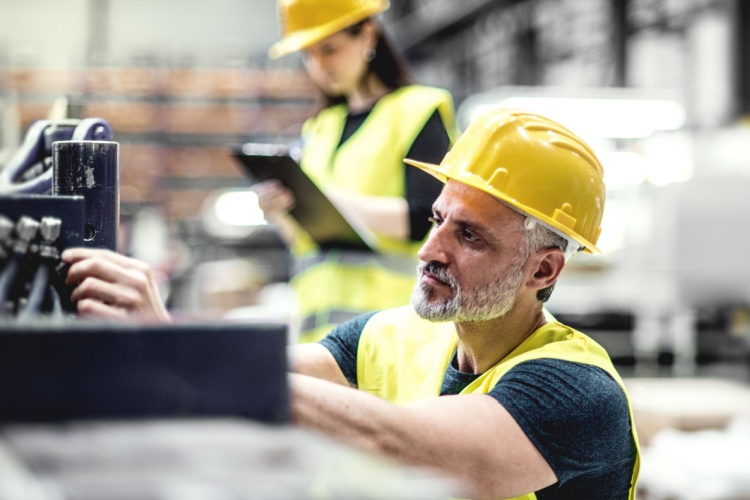Investment market update: March 2025
by Phil Clerkin on April 7, 2025Trade wars and fears that tariffs could spark recessions meant investment market volatility continued in March 2025 and the start of April 2025. Read on to find out more about some of the factors that may have affected the value of your investments recently.
Tariffs imposed by US President Donald Trump affected markets negatively and, as other countries react to the measures, there continues to be uncertainty.
While market volatility and periods of downturn can be worrisome, remember it’s part of investing. Historically, markets have delivered returns over long-term time frames, even after periods of downturn, and often sticking to your investment plan makes financial sense. So, if you’re tempted to react to the news, reviewing your long-term plan and goals could be useful.
UK
Chancellor Rachel Reeves delivered the Spring Statement at the end of March, setting out the government’s spending plans, against a challenging backdrop.
The UK economy contracted by 0.1% in January 2025 when compared to a month earlier following a decline in factory output. In addition, while the rate of inflation is declining, at 2.8% in the 12 months to February 2025, it’s still above the Bank of England’s (BoE) 2% target.
The news prompted the BoE to hold its base interest rate at 4.5%, which will have disappointed households and businesses that were hoping for a cut to ease the cost of borrowing.
Data from Purchasing Managers’ Indices (PMI) was pessimistic too.
According to S&P Global, the manufacturing sector continues to face tough conditions. The headline figure was 46.9 in February. It’s the fifth consecutive month that the reading has been below the 50 mark which indicates growth. There were declines in output, new orders, and employment.
The construction data was similar, with the headline figure falling to 46.6, the biggest downturn since 2009 aside from the 2020 pandemic. There were steep declines in housebuilding and civil engineering activity.
Despite speculation that Reeves would increase taxes and reduce tax thresholds or exemptions, the Spring Statement focused on cutting the welfare budget. Indeed, the announcements made in the 2024 Autumn Budget remain intact.
Investment markets were affected by US trade wars and the war in Ukraine.
On 3 March, European leaders met in London for a summit to draw up a Ukraine peace plan. The meeting led to the pound and European stock market soaring as investors hoped for a resolution. Perhaps unsurprisingly, defence stocks saw the biggest gains, including the UK’s BAE Systems, which jumped by more than 14%.
However, the boost was short-lived. On 4 March, trade wars between the US and Canada, Mexico, and China triggered a drop of 1.27% on the FTSE 100 – an index of the 100 biggest companies on the London Stock Exchange.
There was an uptick in optimism towards the end of the month.
On 24 March, investors hoped that President Donald Trump would show flexibility ahead of the unveiling of new global tariffs in April. The FTSE 100 opened 0.5% up, with mining stocks leading the rally – winners included Anglo American (3.9%), Antofagasta (3.3%), Glencore (3%), and Rio Tinto (2.5%).
However, in early April, Trump unveiled tariffs on many countries, including the UK, which led to markets falling.
Europe
Data from the European Central Bank (ECB) shows inflation is moving closer to the 2% target. It was 2.4% in the 12 months to February 2025 across the eurozone.
The news prompted the ECB to cut the base interest rate by a quarter of a percentage point to 2.25%.
Data suggests the wider European economy is facing similar challenges to the UK.
Indeed, S&P Global PMI figures show a factory downturn. In addition, the headline PMI figure fell from 45.5 in January to 42.7 in February. Worryingly, the two largest economies in the EU, Germany and France, experienced the sharpest downturns.
The Euro Stoxx Volatility index, which tracks investor uncertainty, found stock market volatility hit a seven-month high in February and has more than doubled since mid-December 2024 due to investors feeling nervous about the global outlook.
So, it’s not surprising that there have been ups and downs for investors.
The 3 March summit in London benefited wider European stock markets. Again, defence stocks saw the biggest gains – Germany’s Rheinmetall, France’s Thales, and Italy’s Leonardo all saw an increase of at least 14%.
Expectations that US tariffs will hit the automaker industry led to stocks in the sector falling on 4 March. Among the shares affected were tiremakers Continental, which saw a 9% drop, as well as Daimler Truck (-6.6%), BMW (-5.5%), and Mercedes-Benz (-4.5%).
Similar to the UK, European markets were negatively affected by US tariffs at the start of April.
US
US inflation is nearing the Federal Reserve’s 2% target after a rate of 2.8% was recorded in the 12 months to February 2025.
However, there was negative news from the labour market. According to the Bureau of Labor Statistics, the unemployment rate edged up to 4.1% in February.
PMI readings for the manufacturing sector also reflected this trend. New orders fell in February and companies continued to lay off staff, which may suggest they don’t feel confident in the future. Yet, the sector has grown for two consecutive months.
On 3 March, in contrast to Europe, Wall Street dipped slightly. The technology-focused Nasdaq index was down 0.8% and the broader market indices Dow Jones and S&P 500 both fell 0.3%.
The following day, Trump declared 25% tariffs on imports from Canada and Mexico and 10% tariffs on imports from China. The news led to the dollar weakening, and indices tumbling further – the Nasdaq fell 2.6% and S&P 500 was down 1.7% – and the declines continued into the next week.
Technology stocks in particular have been hit hard by the market volatility. AJ Bell warned since the start of 2025, $1.57 trillion (£1.21 trillion) had been wiped off the value of the Magnificent Seven – seven influential and high-performing US technology stocks – as of 4 March.
Carmaker Tesla is among the biggest losers. As of mid-March, its share price had halved since it benefited from a post-election rally at the end of 2024, which has partly been driven by sales in the EU falling by almost 50%.
Once again, the uncertainty caused by trade wars led to volatility in the US markets.
Asia
As a country with a trade surplus and a large US market, tariffs are expected to hamper growth in China.
China’s GDP target is 5% for 2025, the same target it hit in 2024. However, economists believe replicating this in 2025 will be difficult. China succeeded in reaching the 2024 target thanks to an export boom at the end of the year – exports increased by 10.7%, as some businesses tried to beat the expected tariffs.
In contrast, between January and February 2025, Chinese imports fell by 8.4% year-on-year after economists had expected growth of 1%. The data might suggest that Chinese manufacturers are cutting back on buying raw materials and parts due to trade concerns.
Tariffs imposed by the US led to China unveiling similarly high tariffs at the start of April. The trade war is likely to affect China’s economy and its ability to reach GDP goals in 2025.
Please note:
This blog is for general information only and does not constitute financial advice, which should be based on your individual circumstances. The information is aimed at retail clients only.
The value of your investments (and any income from them) can go down as well as up and you may not get back the full amount you invested. Past performance is not a reliable indicator of future performance.
Investments should be considered over the longer term and should fit in with your overall attitude to risk and financial circumstances.
read moreFinancial protection isn’t just valuable for homeowners. It could be useful for renters too
by Phil Clerkin on October 29, 2024Investment market update: July 2024
by Phil Clerkin on July 30, 2024Investment market update: March 2024
by Phil Clerkin on April 5, 20242 Autumn Statement announcements you may have missed that could simplify your finances
by Phil Clerkin on December 12, 2023Investment market update: October 2023
by Phil Clerkin on November 3, 2023Investment market update: May 2023
by Phil Clerkin on June 9, 2023Economies and businesses still face challenges, but statistics indicate some of the pressure, including rising inflation, is starting to ease. Read on to find out what affected investment markets in May 2023.
Remember, you should have a long-term outlook when investing. You should have an investment portfolio that reflects your goals and you feel confident in. Please contact us if you have any questions about your investments and what the current circumstances mean for you.
UK
Official figures show the UK narrowly avoided a recession after the economy grew slightly in the last two quarters to March 2023.
While the government said the figures were positive, the UK is still bottom in the G7 for growth since the pandemic. In fact, the UK economy was still 0.5% smaller in the first quarter of 2023 than it was in the final quarter of 2019.
However, both the Bank of England (BoE) and the International Monetary Fund (IMF) have upgraded the UK’s growth forecasts, which could be positive news for investors.
The BoE no longer expects a contraction, but rather for the economy to be stagnant this year.
The IMF also revised its previous prediction. The organisation’s managing director Kristalina Georgieva said authorities have taken “decisive and responsible” steps. The IMF now predicts the UK economy will grow by 0.3% this year, rather than contracting by 0.4% as previously forecast.
Inflation is still stubbornly high but in the 12 months to April 2023, it fell from 10.1% to 8.7%. Yet, the BoE has said inflation will fall slower than previously anticipated. The central bank doesn’t expect to hit its 2% inflation target until early 2025, reports suggest.
In response to high inflation, the BoE increased its base interest rate to 4.5% – the highest it’s been since October 2008.
Amid high inflation, energy firms are being accused of profiteering. BP reported bumper profits of $5 billion (£4.05 billion) and outstripped forecasts in the first three months of the year. Shell also posted first-quarter profits of $9.6 billion (£7.7 billion). The profits have led to fresh calls for a tougher windfall tax on energy giants.
According to S&P Global’s Purchasing Managers’ Index (PMI), business outlook is improving but some areas are still in contraction. The UK’s service sector posted its strongest growth in a year. However, the manufacturing industry is still in decline, although the pace of contraction is falling.
Reforms to the London Stock Exchange could mean greater risks for investors in British companies, the Financial Conduct Authority (FCA) has warned.
The regulator has plans to abolish stricter “premium” class London stock market listings. This would make it easier for company founders to retain control of their business in a bid to stop the decline of the London stock market, which has struggled to attract new companies over the last decade.
However, the FCA acknowledged that helping the UK economy would lead to higher risks for investors due to fewer checks on listed companies.
Europe
Inflation increased in the eurozone in April to 7%, figures from Eurostat revealed. The rise paved the way for the European Central Bank to make its seventh consecutive interest rate hike – it increased the base rate by 25 basis points.
Despite the rising cost of living, the European Commission (EC) said the eurozone economy “continues to show resilience in a challenging global context”, as fears of a recession start to ease.
The EC now expects member countries to grow, on average, by 1% in 2023, and by 1.7% in 2024.
Similar to the UK, PMI data indicates factories are struggling. Across the eurozone, factory output declined for the 10th consecutive month. However, the readings also suggest that the rising cost of raw materials, driven up by inflation, is starting to ease which could be good news for businesses.
Germany, the bloc’s largest economy, in particular, is facing challenges. Industrial orders fell by 10.7% month-on-month in March. The figures were significantly more than the 2.2% fall expected and the biggest slump since April 2020 when the pandemic led to businesses halting operations.
US
Headline figures paint an optimistic picture of the US.
Inflation fell slightly in April to 4.9% and the US unemployment rate fell to 3.4%, suggesting businesses are feeling confident enough to make new hires.
However, a survey from the National Federation of Independent Businesses suggests small businesses are worried about the economic outlook and worker shortages.
There are also growing concerns about banks failing in the US. The crisis started with Silicon Valley Bank collapsing in March. At the start of May, trading in the shares of two regional banks was temporarily suspended after dramatic drops.
Central banks maintain the current situation is not similar to the 2008 financial crisis, and, with the exception of Swiss bank Credit Suisse, the crisis hasn’t affected European banks.
Please note:
This blog is for general information only and does not constitute advice. The information is aimed at retail clients only.
The value of your investment can go down as well as up and you may not get back the full amount you invested. Past performance is not a reliable indicator of future performance.
read moreInvestment market update: March 2023
by Phil Clerkin on March 30, 2023As inflation persists, central banks were forced to announce further rises to interest rates in March.
Coupled with the collapse of Silicon Valley Bank, it has been an uncertain few weeks in the world economy.
As an investor, remember that volatility in the markets is normal. Take a long-term view of your portfolio’s performance and focus on your overall goals rather than short-term market movements.
Here are some of the factors that affected markets in March 2023.
UK
After hitting a new record high in February 2023, the FTSE 100 fell back in March. Indeed, in mid-March, the index suffered its worst day of trading since the start of the Covid-19 pandemic.
Overshadowing the spring Budget and sparked by fears over the health of the global banking sector, the FTSE 100 closed 292.66 points lower – around 3.8% – on 15 March.
In a Budget the chancellor called “a plan for growth”, the key announcements included:
- An extension of the Energy Price Guarantee scheme until the end of June 2023
- The removal of the pensions Lifetime Allowance (LTA) tax charge from 2023/24, with plans to abolish the LTA in a future Finance Bill
- A year-long extension to the 5p cut to fuel duty on petrol and diesel, due to end in April
- Rises in various pension allowances to encourage more tax-efficient retirement saving
- Plans to create a dozen new investment zones that could become “12 potential Canary Wharfs”
- A policy of “full capital expensing”, initially for the next three years, which will allow firms to write off all investment against their tax bills.
While the UK remains the only country among the G7 major economies that has yet to fully recover its lost output during the Covid-19 pandemic, it is defying predictions of a recession.
The UK economy grew by 0.3% in January with the largest contributions to growth coming from education, transport and storage, and arts, entertainment and recreation activities, all of which have rebounded after falls in December 2022.
Inflation unexpectedly rose in the year to February 2022, with the Office for National Statistics reporting that rises in restaurant and cafe, food, and clothing costs pushed the annual rate up to 10.4%.
This led to the Bank of England increasing the base interest rate for the 11th consecutive time, to 4.25%.
Europe
Recession fears continue in the eurozone, with GDP growth revised down to 0.0% in the fourth quarter. Household consumption in the fourth quarter of 2022 saw the largest decline since the start of the eurozone in 1999, with the exception of during the Covid-19 pandemic.
Headline inflation in the eurozone remains high – it stood at 8.5% in February – and this led the European Central Bank (ECB) to increase interest rates by 0.5 percentage points in March. This pushes the bank’s main rate up to 3.5%, while the rate paid on eurozone bank deposits left at the ECB increases to 3%.
Christine Lagarde, the president of the ECB, said the central bank would treat the heightened tensions in financial markets separately from its strategy for bringing down inflation.
As with the leading UK and US indices, the STOXX 600 index fell in the aftermath of the SVB crisis, and has remained uncertain due to ongoing economic concerns.
US
The economic headlines in the US in March were dominated by the collapse of Silicon Valley Bank (SVB) – the country’s 16th largest bank.
Since the pandemic began, SVB had been buying lots of what are often considered “safe” assets such as US Treasury bonds and government-backed mortgage bonds. When interest rates started to rise sharply, their fixed interest payments didn’t keep up with rising rates.
Those assets were then no longer worth what SVB paid for them, and the bank was sitting on more than $17 billion in potential losses on those assets as of the end of last year.
In early March, SVB then faced a wave of $42 billion of deposit withdrawal requests. As it wasn’t able to raise the cash it needed to cover the outflows, regulators were forced to step in and close the bank.
While both the US and UK governments ensured that customers of the stricken bank were protected, it has raised fears of another global banking crisis. Indeed, Credit Suisse, one of the world’s oldest banks, was bought by rival UBS in a Swiss government-backed deal in March after regulators worked frantically to secure a deal for the loss-making bank.
Fears of another banking crisis have led to volatility in US markets, with some economists modestly lowering their forecasts for economic growth this year because of the SVB crisis as smaller banks restrict lending in an already weak environment.
Inflation in the US fell to 6% in February 2023, down from an annual rate of 6.4% in January and significantly lower than the 9.1% peak of inflation seen in June 2022.
Despite the uncertainty in the markets, the Fed raised interest rates by 0.25 percentage points in March, taking the upper limit of US interest rates to 5%, the highest level since 2007.
Please note:
This blog is for general information only and does not constitute advice. The information is aimed at retail clients only.
The value of your investment can go down as well as up and you may not get back the full amount you invested. Past performance is not a reliable indicator of future performance.
read moreWhy a hands-off approach could make sense when you invest
by helen hall on December 23, 2022Disclaimer: The information provided in our website blogs is accurate and up-to-date at the time of writing. However, please be aware that legislative changes and updates may occur after the publication date, which could potentially impact the accuracy of the information provided. We encourage readers to verify the current status of laws, regulations, and guidelines relevant to their specific circumstances. We do not assume any responsibility for inaccuracies or omissions that may arise due to changes in legislation or other factors beyond our control.
If you would like any clarification, or have any questions, please get in touch.















